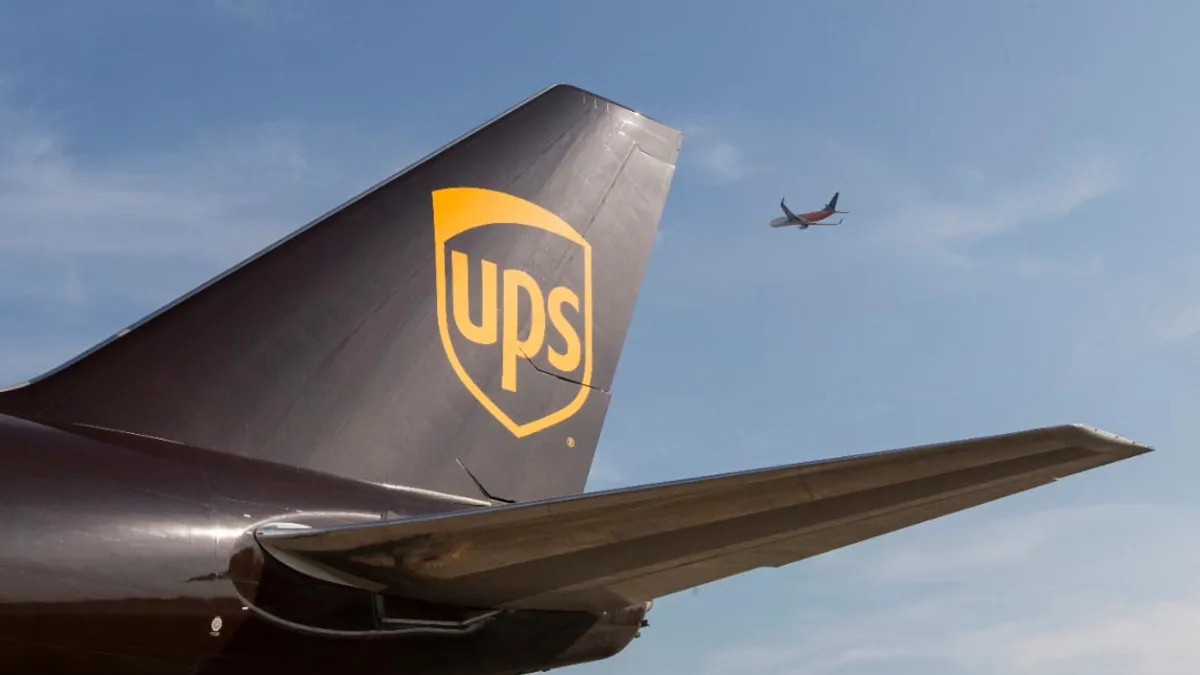UPDATE: Sept. 3, 2020: UPS will raise SurePost rates 24 cents per package beginning Oct. 18, the carrier announced Sept. 2 — roughly one month ahead of peak surcharges taking effect. The United States Postal Service announced a rate hike including USPS Parcel Select service, on which SurePost depends for many last-mile deliveries, last month. The UPS SurePost rate hike is the same amount as the USPS Parcel Select hike on lightweight parcels and begins the same day.
Dive Brief:
- UPS said Friday it will up peak surcharges for the holiday season, increasing the impact of existing surcharges put in place to temper the outsized growth of e-commerce volume brought on by the coronavirus pandemic. The charges apply to shippers moving at least 25,000 parcels per week.
- From Nov. 15 to Jan. 16, 2021, surcharges on Ground, SurePost and domestic Air services will increase to between $1 and $4 per package, depending on the shippers' parcel volume — at a minimum tripling the surcharges put in place as of May 31 due to the pandemic. The surcharges for each service are organized in three tiers, based on the increase in parcel volume compared to February 2020. Shippers that experienced increases of 300% or more will pay the highest fees: $3 per package for SurePost and Ground and $4 per package for Air service.
- The existing large-parcel surcharge of $31.45 will increase to $50, starting Oct. 4 through Jan. 16.
Dive Insight:
Recently installed UPS CEO Carol Tomé said on the company's second quarter earnings call last week that the carrier would "be selective on volume" this peak season. Friday's announcement demonstrates that surcharges are one tool UPS will use to whittle down its prospective customers.
UPS is facing virtually unlimited demand for small parcel services as the pandemic stretches on in the U.S., and with it the shopping shift toward e-commerce. Daily volume was up by nearly 23% in Q2 year over year. Because the volume growth is disproportionately weighted toward consumer deliveries, revenue per piece was down 4% in the same quarter and adjusted operating profit was slightly down. Surcharges are a way to bring both back to, or above, par.
"If you are a large retailer, you can pass those cost increases across the SKU base and the customers don't know ... So, there is an opportunity here on the pricing side to do what we need to do," Tomé said on last week's earnings call.
This year's ongoing fees are a significant shift from 2019's peak season, in which UPS announced no residential surcharges. In 2018, the carrier applied residential peak surcharges of 28 cents for Ground shipments and 99 cents for Air.
Multiple parcel contract experts told Supply Chain Dive that surcharges should not act as a deterrent to shippers to renegotiate contracts, especially for shippers with desirable volume like B2B shipments. They may push shippers to diversify logistics providers and use regional parcel carriers as a way to avoid or lessen UPS surcharges.
As of Friday afternoon, FedEx had not announced changes to its peak surcharges for the holiday season. When UPS announced surcharges on domestic volume in May, FedEx followed suit about one week later.















